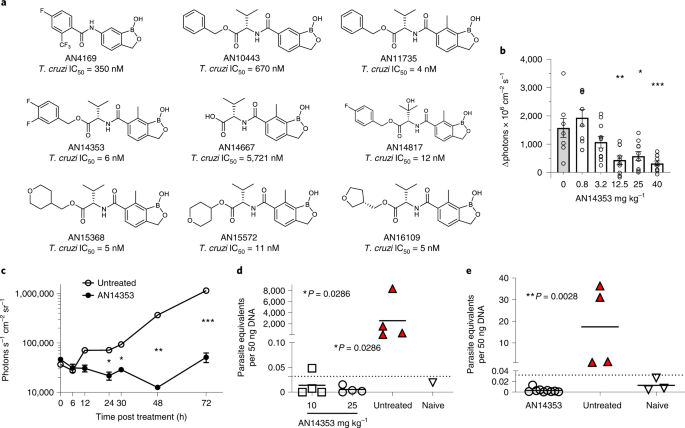2022-09-08 カリフォルニア大学サンタバーバラ校(UCSB)
この化合物はすでに他の病気の治療に使われているため、白血病に合わせた治療や適応外処方に関わる煩雑な手続きが大幅に削減される。
エピジェネティックに関連する酵素の多くは単独で機能するが、DNMT3Aは常に複合体を形成し、それ自身またはパートナータンパク質と複合体を形成していた。これらの複合体には60種類以上のパートナーが含まれることがあり、これらのパートナーはDNMT3Aを特定の遺伝子に制御させるためのホーミング装置として機能しているのだ。
研究チームは、DNMT3Aと急性骨髄性白血病につながるエピジェネティックな変化との間に直接的な関連性を見出した。
これまでに研究された1,500種類の薬剤を含む化学物質ライブラリーを入手し、NMT3Aとパートナータンパク質との相互作用を阻害する薬剤(タンパク質間阻害剤、PPI)を2種類特定した。
さらに、この2つの薬剤はタンパク質の活性部位に結合しないため、体内の他のすべての細胞で働くDNMT1には影響を与えない。
これらの薬剤は、単に白血病治療の画期的な進歩であるというだけではありません。酵素の活性部位から離れた部分をターゲットとするタンパク質間相互作用阻害剤である。
<関連情報>
- https://www.noozhawk.com/article/researchers_identify_new_kind_of_chemo_for_leukemia_patients
- https://pubs.acs.org/doi/abs/10.1021/acs.jmedchem.2c00725
ファーストインクラスのDNMT3Aアロステリック阻害剤がタンパク質間相互作用を阻害し、急性骨髄性白血病細胞の分化を誘導することを発見 First-in-Class Allosteric Inhibitors of DNMT3A Disrupt Protein–Protein Interactions and Induce Acute Myeloid Leukemia Cell Differentiation
Jonathan E. Sandoval, Raghav Ramabadran, Nathaniel Stillson, Letitia Sarah, Danica Galonić Fujimori, Margaret A. Goodell, and Norbert Reich
Journal of Medicinal Chemistry Published:July 22, 2022
DOI:https://doi.org/10.1021/acs.jmedchem.2c00725

Abstract
We previously identified two structurally related pyrazolone (compound 1) and pyridazine (compound 2) allosteric inhibitors of DNMT3A through screening of a small chemical library. Here, we show that these compounds bind and disrupt protein–protein interactions (PPIs) at the DNMT3A tetramer interface. This disruption is observed with distinct partner proteins and occurs even when the complexes are acting on DNA, which better reflects the cellular context. Compound 2 induces differentiation of distinct myeloid leukemia cell lines including cells with mutated DNMT3A R882. To date, small molecules targeting DNMT3A are limited to competitive inhibitors of AdoMet or DNA and display extreme toxicity. Our work is the first to identify small molecules with a mechanism of inhibition involving the disruption of PPIs with DNMT3A. Ongoing optimization of compounds 1 and 2 provides a promising basis to induce myeloid differentiation and treatment of diseases that display aberrant PPIs with DNMT3A, such as acute myeloid leukemia.


